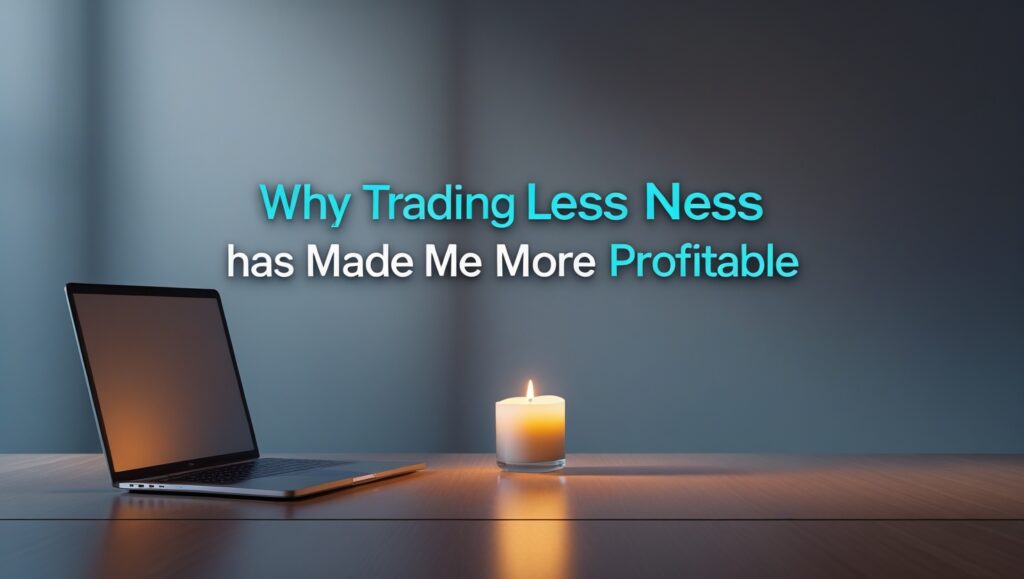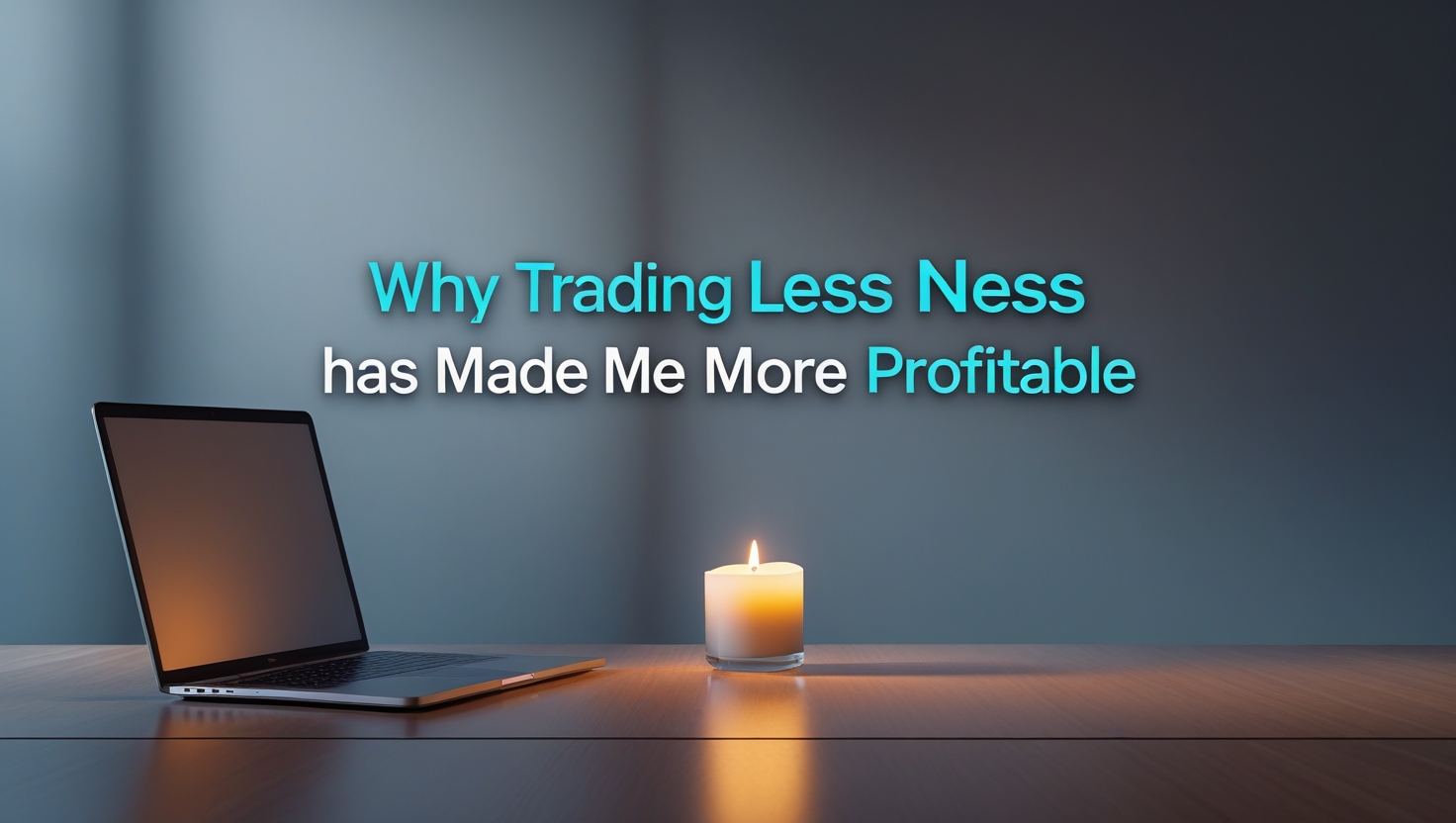Why Trading Less Has Made Me More Profitable
Why Trading Less Has Made Me More Profitable
When I started trading, I thought I had to be in the market every single day. I believed more trades meant more chances to win. But I was wrong. Very wrong.
Over time, I realized that trading less — not more — was the secret to becoming profitable. It wasn’t about how many trades I took. It was about how high-quality those trades were. Once I made this shift in mindset and strategy, everything changed.
Inside my ebook, I explain the system I use today: how I build a tight watchlist, only enter high-probability setups, and still manage to cover my monthly expenses with my trades. No indicators. No all-day screen time. Just focused execution.

Table of Contents
More Trades = More Mistakes
When I was trading all the time, I was making emotional decisions. I was chasing price, revenge trading after losses, and overtrading out of boredom. All of it drained my account — and my confidence.
It wasn’t until I started tracking my trades that I noticed a pattern: my best trades came from my pre-planned setups. Every time I stuck to my process and waited for confirmation, I ended green. But when I forced trades? Red days.
Why I Trade Only 2–3 Times a Week
Now, I only trade when everything lines up. That means I might only take two or three trades a week, and sometimes less. But those trades are clean, thought-out, and managed with discipline.
I’m no longer reacting to the market. I’m letting the market come to me.
Trading Less Protects My Capital
One of the biggest benefits of trading less is capital preservation. You can’t grow your account if you’re constantly taking unnecessary losses. Every bad trade you avoid is just as important as every good trade you take.
I’d rather sit on my hands all day than give back money because I was impatient.
I Focus Only on A+ Setups
I have a very clear idea of what a good trade looks like. If a stock doesn’t match my criteria — no matter how tempting it looks — I skip it.
This discipline is what I teach in my ebook. I show exactly how I filter the noise and pick the best setups each week.
The Myth of Daily Action
There’s a false belief in trading that you have to be active every day to be successful. I bought into that too. But real success came when I learned to be selective. You don’t need 20 trades to make money. You just need a few good ones.
Some weeks, I only trade one day. And that’s enough to hit my targets.
Final Thoughts
Trading less has made me calmer, more disciplined, and more profitable. I’m not stressed. I’m not glued to the screen. I follow a plan, take quality trades, and step away when the day is done.
If you’re stuck in the cycle of overtrading, just know — I’ve been there. I built a strategy that helped me break free and start using stocks to pay real-life bills. You can get the full breakdown inside
👉 my ebook here
It’s everything I wish I had when I started.
One thing I didn’t expect when I stopped trading every day was how much clearer my mindset became. I stopped feeling rushed. I stopped staring at charts trying to force something to happen. The pressure disappeared because I finally understood that no trade is a position too.
When I take fewer trades, I naturally put more thought into each one. I take the time to ask myself: Is this setup worth risking my capital? Most of the time, if I hesitate, the answer is no. That simple pause has saved me from countless unnecessary losses.
I also stopped relying on other people’s alerts. When you’re trading constantly, it’s easy to fall into the trap of chasing ideas from Twitter, Discord, or YouTube. But when I narrowed my focus, I became more independent and confident in my own decisions.
There’s something powerful about having fewer, higher-quality opportunities. It means I can manage risk more effectively, size in better, and plan exits without stress. The trade becomes intentional, not reactive — and that’s the key to consistent results.
Inside my ebook, I explain how I created a routine where I only need a few trades a week to hit my goals. I walk through my exact checklist, entry/exit thought process, and how I manage risk without overcomplicating it.
I also noticed my losses got smaller — and my wins got bigger. Why? Because when you’re not trading every little move, you avoid the death by a thousand cuts. I stopped bleeding out from low-quality trades and started focusing only on setups with real potential.
Another reason I became more profitable is because I stopped trying to time every wiggle in the chart. I wait for momentum. I wait for volume. I wait for confirmation. Trading less gave me the patience to let the setup come to me — and that changed everything.
On top of that, my lifestyle improved. I wasn’t glued to my screen anymore. I could step away, go for a walk, focus on other income streams, and come back the next morning fresh. This is sustainable trading, and I wish more beginners would realize that.
There’s this illusion that the harder you work in trading, the more money you’ll make. But this isn’t a job where time = income. It’s about precision. A single good trade can pay more than five mediocre ones. That’s why trading less is actually more efficient.
Sometimes I only trade Tuesdays and Thursdays, and I still make enough to cover my needs. That’s possible when you have a system, clear criteria, and the mindset to wait. If you don’t have that yet, that’s exactly what I created in my ebook.
I’m not special. I just got tired of losing money doing too much. Once I simplified my process and trusted it, everything started to click. And now I want to help others stop the burnout and start trading smarter — because your time and energy are valuable too.
If you’re ready to trade less and earn more, start with what’s already working for me.
👉 Download the ebook here
and see how I built a system that helps me trade on my terms, without stress or confusion.

Stay ahead in the stock market! Subscribe to our newsletter and receive exclusive stock flow reports, trading insights, and actionable tips directly in your inbox. Join thousands of traders who get our updates first.







